Earthquake swarm starts at Reykjanes volcanic system, Askja swarm still in progress, Iceland
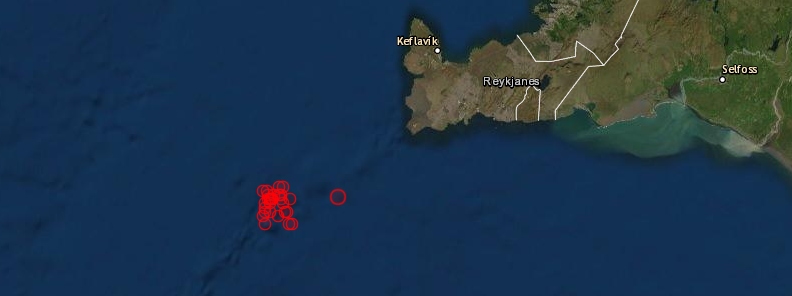
An earthquake swarm started on Reykjanes ridge, 45 km (28 miles) SW of Reykjanes, Iceland, around 12:00 UTC on November 16, 2019. As of early November 17, the swarm seems to be decreasing. The last confirmed eruption at this system took place in 1926 (VEI 0) NE of Eldey and lasted about 4 days. Six volcanic eruptions have occurred since 1 211 CE, on average every 130 years. The duration of these submarine eruptions is estimated based on contemporary records, and varies from a few days up to few weeks.
According to data provided by Icelandic Met Office (IMO) at 09:24 UTC on November 17, roughly 30 earthquakes above M3.0 and nearly 300 smaller earthquakes have been detected in the area since the swarm started.
The largest earthquake in the swarm was M4.5 at 13:17 UTC on November 16.
The IMO has received reports of the earthquakes being felt in the Reykjanes peninsula, the capital area and Akranes.
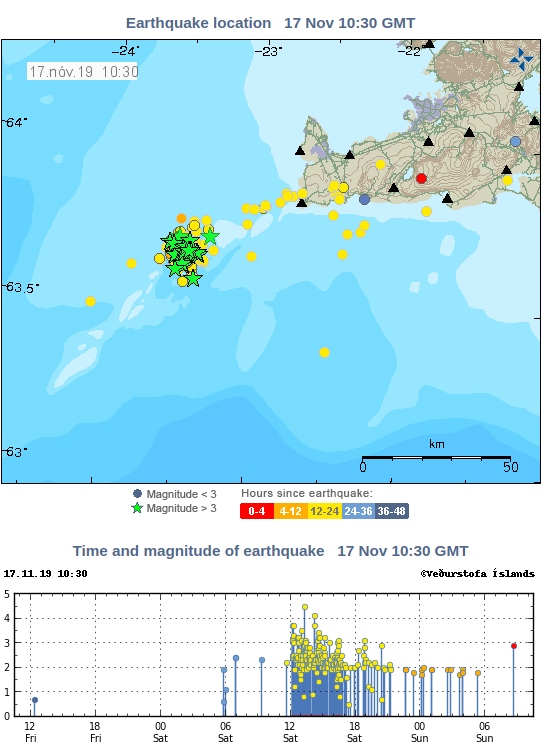
Credit: IMO
The Eldey volcanic system has been moderately active in Holocene time. The system is located on the northernmost part of the Reykjanes Ridge and is submarine with the exception of the island Eldey, and the skerries Eldeyjardrangur, Geirfugladrangur and Geirfuglasker. Maximum water depth within the system is about 250 m (820 feet).
The characteristic activity is submarine/explosive basaltic eruptions. Six small submarine/explosive eruptions have been located within this system during the last 1 100 years, the last eruption occurring in 1926 CE.
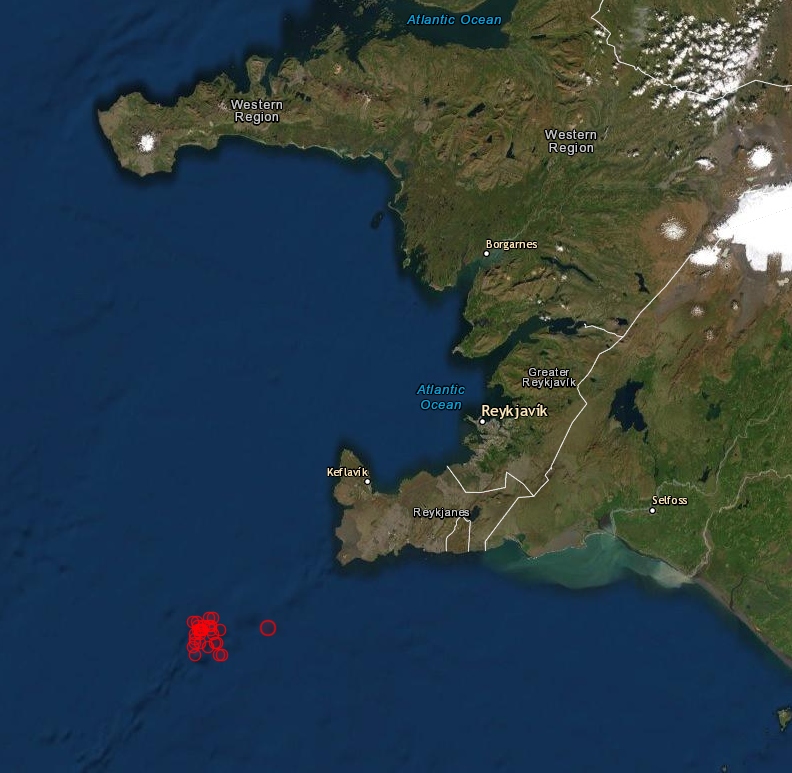
Earthquake swarm Reykjanes ridge November 16/17, 2019. Credit: EMSC
Possible eruption scenarios
Small eruptions (tephra fallout and lava flows <0.1 km3, recurrence time ~130 years)
Six small eruptions have occurred in historical times, the last one in 1926 CE. Eldey volcanic system is submarine and therefore all eruptions occur out in the ocean. Precursory activity is unknown but increased seismicity is expected.
This scenario starts with a fully submarine eruption at depths of 100 – 260 m (328 – 853 feet). Most of the erupted material will be deposited as hyaloclastites on the seafloor, but some may reach above the sea surface. If the eruption reaches above the water level, it will produce Surtseyan-type explosions. These explosions are relatively mild, with most of the tephra deposited in the ocean in the vicinity of the vent. The volcanic plume will be formed of seawater vapor, the plume height may reach several km. An eruption at the northeastern tip of the Eldey system could possibly deposit tephra at the international airport Keflavik. With reference to known distribution patterns of tephra from the submarine part of the Reykjanes volcanic system, a 0.5 – 1 cm (0.19 – 0.39 inches) thick tephra layer could – possibly – be deposited at the airport.
The eruption duration is several days or weeks. Some local disturbance to ship traffic may happen. If the eruption continues for longer than several days, the tephra may begin to form a small island above sea level. Subaerial lava flows are highly unlikely. The island is unlikely to be long-lived and will be eroded away on a timescale of weeks or months.
Moderate to large eruptions (0.1 -0.5 km3; >0.5 km3)
No eruptions in historical times.
Largest known eruption
In the largest submarine eruptions in the Eldey volcanic system one or more volcanic islands rose above sea level but their age, area or volume is not known. The Eldey island is the only remaining one. It may initially have risen about 100 m (328 feet) above sea level (currently 70 m / 229 feet a.s.l.). Maximum water depth is 250 m (820 feet) and a 350 m (1 148 feet) high edifice can be envisaged. For comparison the Surtsey volcanic island (within Vestmannaeyjar volcanic system) was about 1 100 m (3 608 feet) long, 800 m (2 624 feet) wide and 160 m (524 feet) a.s.l. after erupting for 10 weeks (original water depth at eruption site 130 m (426 feet)).
An explosive submarine eruption at the northeastern tip of the Eldey system could possibly deposit tephra at the international airport Keflavik. With reference to known distribution patterns of tephra from the submarine part of the Reykjanes volcanic system, a 0.5 – 1 cm (0.19 – 0.39 inches) thick tephra layer could – possibly – be deposited at the airport.
Askja volcano earthquake swarm continues
Meanwhile, earthquakes are still being detected in the earthquake swarm around Askja.
A total of 166 earthquakes were recorded in the region in 24 hours to 11:05 UTC on November 17.
The largest was M2.0 located 2.6 km (1.6 miles) E of Dreki at 00:32 UTC on November 16. The quake hit at a depth of 4.7 km (2.9 miles).
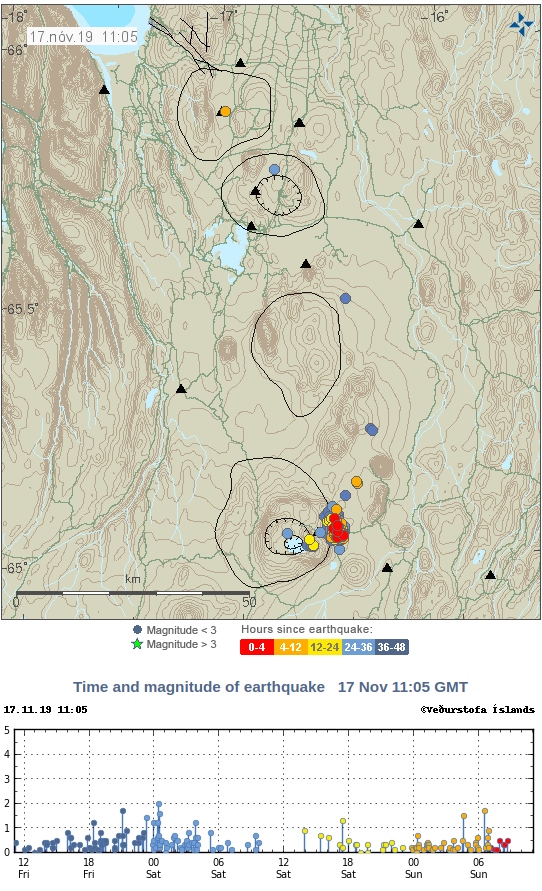
Credit: IMO
Geological summary
The Reykjanes volcanic system at the SW tip of the Reykjanes Peninsula, where the Mid-Atlantic Ridge rises above sea level, comprises a broad area of postglacial basaltic crater rows and small shield volcanoes.
The submarine Reykjaneshryggur volcanic system is contiguous with and is considered part of the Reykjanes volcanic system, which is the westernmost of a series of four closely-spaced en-echelon fissure systems that extend diagonally across the Reykjanes Peninsula.
Most of the subaerial part of the volcanic system (also known as the Reykjanes/Svartsengi volcanic system) is covered by Holocene lavas.
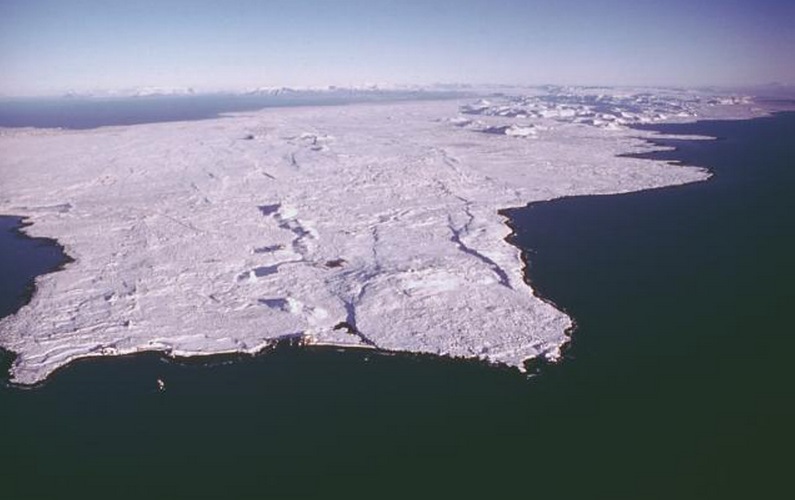
Photo by Oddur Sigurdsson, 1998 (Icelandic National Energy Authority).
Subaerial eruptions have occurred in historical time during the 13th century at several locations on the NE-SW-trending fissure system, and numerous submarine eruptions at Reykjaneshryggur dating back to the 12th century have been observed during historical time, some of which have formed ephemeral islands. Basaltic rocks of probable Holocene age have been recovered during dredging operations, and tephra deposits from earlier Holocene eruptions are preserved on the nearby Reykjanes Peninsula. (GVP)
Featured image credit: EMSC

Exciting! Large Icelandic eruptions are strongly correlated with solar grand minima/Gleissberg cycles. All of the big dips on the JG/U 2K study prove that thought. … http://www.uni-mainz.de/eng/bilder_presse/09_geo_tree_ring_northern_europe_climate.jpg